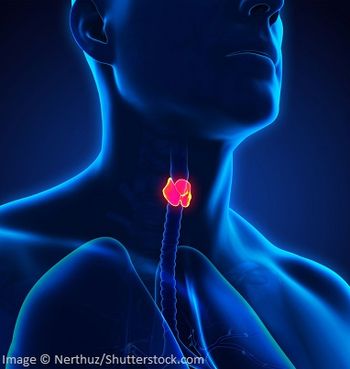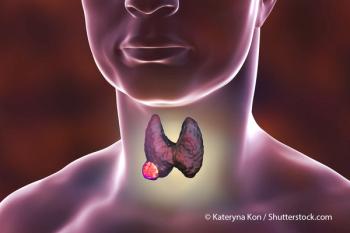
Alarming Trend in Pediatric Thyroid Cancer Diagnoses Over Past 8 Years
Despite better detection, the incidence of pediatric thyroid cancer increased by 9.5% per year from 2006 to 2013 compared with 1.1% per year from 1973 to 2006.
Despite better detection, the incidence of pediatric thyroid cancer increased by 9.5% per year from 2006 to 2013 compared with 1.1% per year from 1973 to 2006, according to the results of a cross-sectional study
“This is an interesting study that demonstrates what many of us believe: in addition to increased detection, there is likely a true and clinically relevant increase in thyroid cancer,”
In the current study, the Surveillance, Epidemiology, and End Results (SEER) database was mined for 1,806 subjects aged younger than 20 years (80.5% women; 83.2% white) who had thyroid cancer. The subjects were categorized by histologic type, stage, and tumor size.
The overall incidence rate of thyroid cancer increased yearly from 0.48 per 100,000 person-years in 1973 to 1.14 per 100,000 person-years in 2013. Incidence rates gradually increased over time from 1973 to 2006 (95% CI, 0.56%–1.67%), with an annual percentage change (APC) in incidence rate of 1.11%. A marked increase in incidence occurred from 2006 to 2013, with an APC in incidence rate of 9.56% (95% CI, 5.09%–14.22%), respectively.
Among the other findings, the incidence rate of large tumors (> 20 mm) slowly increased from 1983 to 2006 (APC, 2.23%; 95%CI, 0.93%–3.54%) and then significantly increased from 2006 to 2013 (APC, 8.84%; 95%CI, 3.20%–14.79%); these rates were comparable to rates of small tumors (1–20 mm). Extended thyroid cancer showed a similar pattern of increase between 1973 and 2006, as well as between 2006 and 2013, with these results not differing much from those seen in localized disease.
In 2002, initiatives to limit child exposure to ionizing radiation were launched in an effort to decrease the incidence of cancer. Thus, children are less likely to receive diagnostic imaging studies compared with adults, potentially limiting the effect of overdiagnosis.
Previous research on this topic has been minimal. One study showed an increase in incidence of 1.1% per year for thyroid cancer, but it did not account for variation in trends over time. Furthermore, the analysis did not extend past 2004.
Although overdiagnosis appears to account for much of the increased incidence of pediatric thyroid cancer, an emerging body of work detracts from this “overdiagnosis hypothesis.” For instance, research has shown that stage migration (ie, when newer diagnostic technology results in upstaging of tumors) could result in many lower-stage cases incidentally being classified as higher-stage disease.
Newsletter
Stay up to date on recent advances in the multidisciplinary approach to cancer.






























































































